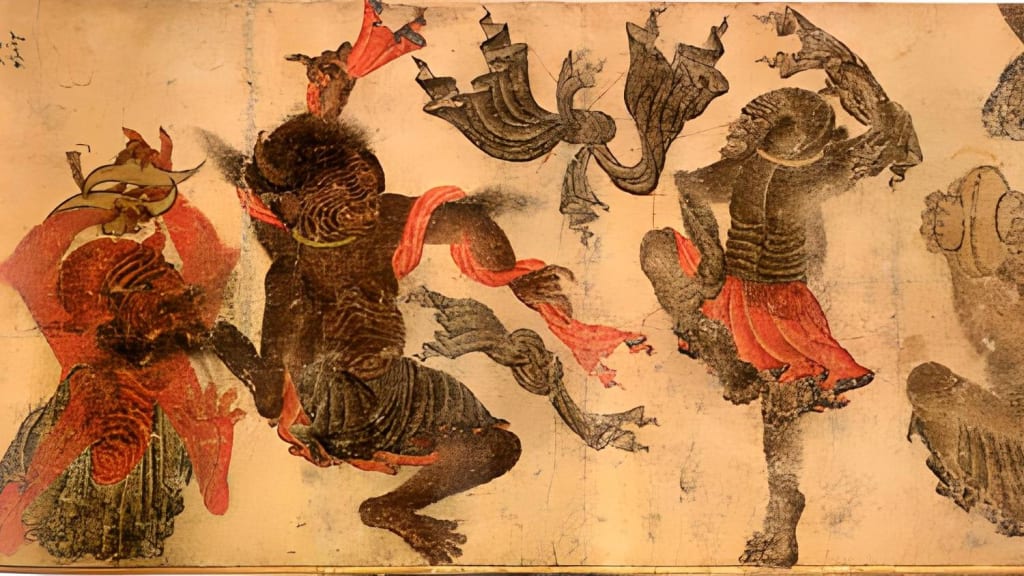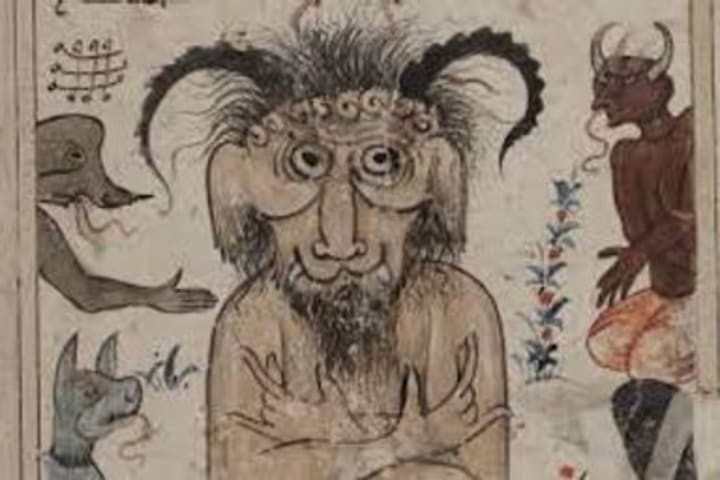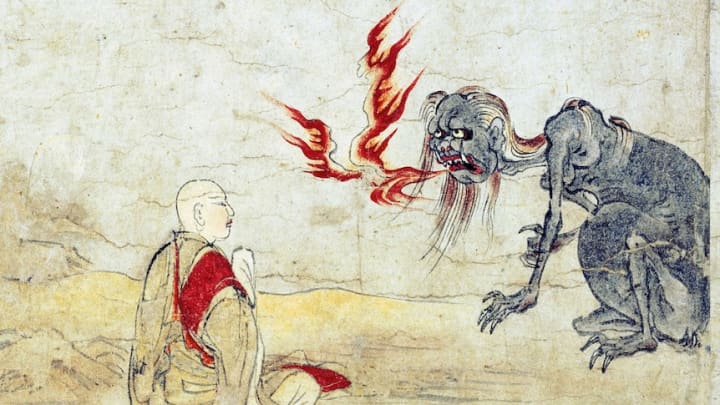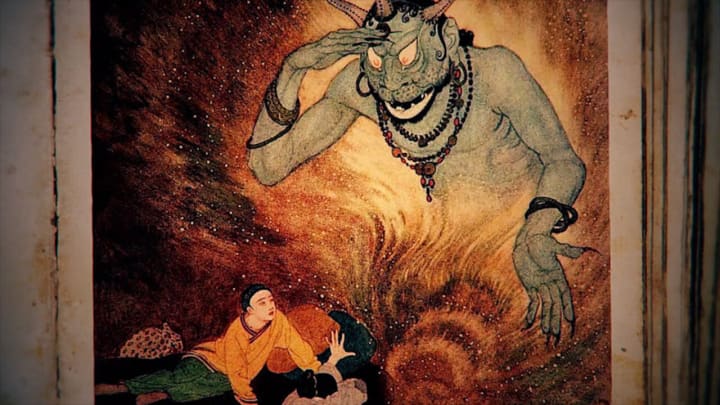Jinn: Unveiling the Mysteries of Supernatural Entities in Islamic Lore
The Jinn story.

In the rich tapestry of supernatural beings that populate various cultural and religious traditions, few are as enigmatic and deeply ingrained in folklore as the jinn. Rooted in Islamic theology and Arabian mythology, the concept of jinn has captivated the imaginations of people for centuries.
This article aims to delve into the intricate world of jinn, exploring their origins, characteristics, and the profound impact they have had on cultural narratives across the Islamic world and the Tale of the Benevolent Jinn and the Cursed Kingdom
Origins of the Jinn:

The term "jinn" finds its roots in Arabic, meaning "hidden" or "concealed." According to Islamic tradition, jinn are sentient beings created from smokeless fire by Allah.
They exist alongside humans and angels in a realm beyond our sensory perception, possessing free will and the capacity for both good and evil actions. The Quran, the holy book of Islam, contains numerous references to jinn, emphasizing their existence and role in the divine order.
Characteristics of Jinn:

Jinn are often portrayed as shapeshifters, capable of assuming various forms, from ethereal and invisible beings to animals and even humans. This shape-shifting ability grants them unparalleled access to the human realm, enabling them to interact with and influence the lives of mortals. While some jinn are benevolent and follow a righteous path, others are malevolent and harbor ill intentions towards humanity.
The Quranic narrative describes different categories of jinn, including Ifrit, Marid, and Jann. Ifrits are considered the most powerful and rebellious among them, often associated with fire and linked to stories of rebellion against divine authority.
Marids are typically depicted as water spirits, residing in oceans and lakes, while Jann are considered more benevolent, residing in desolate places and coexisting harmoniously with nature.
Interactions with Humans:

Jinn are believed to share the world with humans but in a parallel existence. They may choose to live in abandoned places, deserts, or even amidst dense forests. The Quran mentions that jinn were created to worship Allah, just like humans. However, their free will allows them to make choices that can lead them towards righteousness or disobedience.
In Islamic lore, jinn are often associated with possessing humans, causing ailments, and influencing thoughts and actions. Possession by malevolent jinn is considered a serious affliction, leading to various rituals and practices within Islamic exorcism to expel these entities and bring relief to the affected individuals.
Cultural Representations of Jinn:
The concept of jinn has permeated various aspects of Islamic culture, including literature, art, and folklore. Stories featuring jinn are passed down through generations, contributing to the rich oral traditions of different Islamic societies. Tales of encounters with jinn, both benevolent and malevolent, have become a source of fascination and caution.
One of the most famous literary works incorporating jinn is "One Thousand and One Nights" (commonly known as Arabian Nights). This collection of Middle Eastern folk tales includes stories of magic lamps, wish-granting genies, and encounters with powerful jinn that shape the fate of the protagonists.
In visual arts, jinn are often depicted as mysterious beings, blending elements of fantasy and the supernatural. Artists draw inspiration from Islamic calligraphy, geometric patterns, and mystical symbolism to create representations of jinn that convey their elusive nature and spiritual significance.
Contemporary Beliefs and Practices:

While the concept of jinn is deeply rooted in Islamic tradition, beliefs in these supernatural beings persist in contemporary times. In various Islamic cultures, especially in regions with a rich history of folklore, people continue to share anecdotes of jinn encounters and seek protection through rituals prescribed by religious authorities.
Islamic scholars provide guidance on protecting oneself from malevolent jinn through recitation of specific Quranic verses and supplications. It is believed that seeking refuge in Allah and maintaining a strong connection to one's faith can serve as a shield against negative influences from the unseen realm.
The Tale of the Benevolent Jinn and the Cursed Kingdom

Once upon a time, in the heart of the Arabian Desert, there existed a prosperous kingdom ruled by a wise and just sultan. The people of the kingdom lived in harmony, and the land was known for its lush oases and golden sands. However, the kingdom harbored a dark secret that casts a shadow over its prosperity.
Deep within the sprawling palace, hidden chambers held a cursed artifact—a mystical gem with the power to control the elements and grant untold riches. The sultan, unaware of the dark forces at play, proudly displayed the gem, believing it to be a symbol of his kingdom's unmatched prosperity.
One fateful night, as the full moon bathed the desert in its silver glow, a kind and benevolent jinn named Amirah sensed the imbalance caused by the cursed gem. Amirah had watched over the kingdom for centuries, bound by a sense of duty to protect its people from harm.
Amirah decided to reveal herself to the sultan in a dream. In his slumber, the sultan saw a vision of a radiant being cloaked in ethereal light, warning him of the impending doom brought about by the cursed gem. Heeding the mysterious dream, the sultan summoned his most trusted advisors and shared the revelation.
Determined to break the curse, the sultan sought the guidance of wise scholars and sought the counsel of mystics. Through ancient texts and consultations with seers, they learned that only a selfless act of sacrifice could appease the jinn who guarded the cursed artifact.
Inspired by the spirit of unity and the welfare of his people, the sultan decided to embark on a perilous journey to the heart of the desert. There, in the ancient sands, he would make the ultimate sacrifice to free his kingdom from the grip of the cursed gem.
As the sultan and his loyal companions ventured into the desert, they faced trials and tribulations orchestrated by the malevolent forces tied to the cursed gem. Sandstorms and mirages tested their resolve, but the sultan pressed on, guided by a vision of Amirah leading the way.
Amirah, witnessing the sultan's noble quest, appeared before him in a burst of radiant light. She revealed her true form, a majestic being with iridescent wings and eyes that held the wisdom of ages. With compassion in her voice, Amirah commended the sultan's bravery and explained the nature of the curse.
To break the curse, the sultan had to willingly part with the cursed gem, surrendering the illusion of wealth and power it bestowed. The sacrifice required immense strength of character, as the sultan had to embrace humility and acknowledge that true prosperity lay in the well-being of his people.
In a climactic moment beneath the shimmering moon, the sultan held the cursed gem aloft, and with a heart full of selflessness, he released it into the desert winds. As the gem disappeared into the sands, a radiant glow enveloped the kingdom, dispelling the darkness that had plagued it for so long.
The once-cursed kingdom flourished anew, but the tale of the benevolent jinn and the selfless sultan endured as a reminder of the enduring power of sacrifice and the importance of humility in the face of temptation.
Amirah, satisfied with the sultan's courage and wisdom, returned to the hidden realms, leaving the kingdom to thrive under the watchful eyes of the jinn who had once protected it from the shadows.
Conclusion:
The world of jinn is a captivating realm that bridges the supernatural and the earthly, deeply embedded in the cultural and religious fabric of Islamic societies. As mysterious and elusive beings, jinn continues to capture the human imagination, inspiring tales of wonder, caution, and spiritual contemplation.
Whether encountered in ancient manuscripts, celebrated literary works, or shared through oral traditions, the stories of jinn reflect the timeless human fascination with the unseen and the inexplicable, inviting us to explore the mysteries that lie beyond the limits of our perception.
About the Creator
Enjoyed the story? Support the Creator.
Subscribe for free to receive all their stories in your feed. You could also pledge your support or give them a one-off tip, letting them know you appreciate their work.





Comments
There are no comments for this story
Be the first to respond and start the conversation.